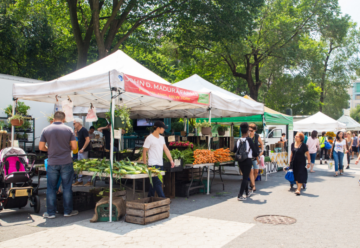
It’s no secret that the cannabis industry is on a steep decline in a variety of states, including California. We have time and again written about the specific woes plaguing the California cannabis industry. High taxes, a staggering credit crunch and collections problems, receiverships, rampant local prohibition, overregulation by the state, and the raging illegal market are just a few. Now, queue the California cannabis voters who may have initially supported this democratic experiment but are now thinking twice about local laws and rules permitting commercial cannabis activity in their borders. Cannabis repeal may be on the horizon.
Cannabis NIMBYs
The term “Not In My Backyard” neighbor (“NIMBY“) has obvious negative connotations. Of course, cannabis NIMBYs are not unique to California. They’re everywhere in cannabis.
Years ago, we wrote a post about how to deal with them and their tactics. See here. Essentially, NIMBYs thrive on confrontation and manufacturing lots of arguments to eliminate or stop progress when it comes to cannabis business development. They’ll even go so far as to form plaintiff groups to sue local government and cannabis businesses on any possible grounds, including (and usually) alleged environmental issues or violations of due process rights in the creation of cannabis laws.
In turn, cannabis businesses are wise to be as transparent as possible with all of their neighbors as well as their local government, and to keep constant contact with regulators in order to avoid inadvertent regulatory violations. But what happens when you make it past the initial NIMBYs only to find yourself at their mercy again years after you’ve set up shop?
California cannabis repeal
When I was practicing in Washington State, there were several instances where a city or county initially embraced cannabis legalization, welcoming all kinds of businesses to set up shop. Then, a couple of years down the line, you’d see some of these local governments re-think those decisions and enact subsequent moratoria. In some cases, these jurisdictions even pulled or denied conditional permitting in order to completely stamp out cannabis businesses (yes, that can be done depending on local laws).
Now, I’m seeing some rumblings in California of certain cities and counties going back on their initially warm and fuzzy cannabis feelings. And a lot of that is driven by fed up and annoyed local constituents.
Humboldt County
I recently read this article by Lester Black from SF Gate. The Emerald Triangle in California is universally known for its cannabis quality and generational cannabis farmers, and that especially includes Humboldt County. It was one of the first local governments to regulate cannabis farmers in the state post-legalization back in 2018. Now though, its entire local industry is going to face a potential death knell posed by a March 2024 vote on a new initiative that heavily restricts the existing industry, while essentially eliminating any more farms from setting up.
Here’s a copy of the initiative. According to the initiative website, the proposed amendments would “Reduce the cannabis cultivation footprint, promote healthy environments and rural communities, ensure public involvement, and protect truly small-scale, environmentally-minded cannabis farmers”. Backers of the initiatve state on their website that, due to the County’s initial planning and current laws,
“There are now over 1000 legally permitted operations, most of which are in stark contrast to the small-scale, organic ‘hippy’ farming, of previous decades. The newly emerging cannabis culture represents a more industrialized ‘mega-grow approach’, with heated and ventilated grow houses, 24/7 lights, extensive use of water, and loud generators.”
Further, per the initiative’s website,
“. . . incursions of mega-grows into rural residential, agricultural, and woodland areas have been received with considerable anger and bitterness by the rural public. One reason for this is that the county’s ordinance 2.0 precludes most affected rural residents from being notified that a mega-grow would be setting up next door to them. Such disregard has been taken to be demeaning and disrespectful, leaving residents little if any recourse to complain, or to go through the pain of expensive and difficult litigation. Residents cite issues of health, safety, welfare, dangerous traffic, harassment by growers, and harm to the environment and natural beauty. Of particular concern has been diversion of stream and well water that takes critical water away from residents and ranchers, as well as from watersheds and ecosystems, where water deprivation impacts animal and plant habitats. Strong objections have been made about the constant night lights and generator noise that disrupt residents’ lives and that impact wildlife, including the Northern Spotted Owl.”
Humboldt industry reaction
The proposed, 38-page initiative (called the Humboldt Cannabis Reform Initiative) represents a massive overhaul to existing Humboldt County cannabis laws. Perhaps most importantly, this initiative would limit cannabis farms to no more than 10,000 square feet, which would make about 400 currently permitted farms non-conforming uses under the initiative; and the number of permits issued would be capped at no more than 1,200, valid only for one year before renewal. Further, a business could not have multiple cultivation permits on a single parcel. No generators would be allowed except for one for emergency use only, and all neighbors of a cultivation site would have to be notified beforehand that a grow was coming in. Lastly, for existing growers to come into compliance with the proposed initiative, they’d have to enact a laundry list of expensive changes or be rendered non-conforming and eventually shut down.
The County’s reaction to de facto cannabis repeal
The County Planning Department’s analysis of the initiative is incredibly interesting. Early in its analysis, the Planning Department writes “The [initiative] purports to ‘…protect the County’s residents and natural resources from harm caused by large-scale cannabis cultivation…’ It does this by developing a regulatory system that renders most existing permitted farms non-conforming.” The analysis goes on to state:
“The largest farms in Humboldt County range between 7 and 8 acres. There are four farms this size. For comparison, in Lake County there are farms in excess of 60 acres and in Santa Barbara and San Bernadino Counties there are farms in excess of 100 acres. In a statewide market context, Humboldt County does not have large scale farms.”
Essentially, the County is claiming that there are no real “mega farms” in Humboldt County at this point in time, and that:
“the public does not understand what this initiative would do and signed the petition thinking that ‘large scale’ cannabis farms should not be in Humboldt County without recognizing that most of the so-called ‘large-scale farms’ that would be outlawed if the [initiative] passed are the very farms that have existed in Humboldt County for decades”.
It seems then that the County Planning Department does not support the passage of the initiative, and that’s what it relayed to the County Board of Supervisors.
What’s next in Humboldt
Undoubtedly, between now and March, both proponents and opponents of this initiative will undertake education campaigns for and to the public. The big legal takeaway though is that Humboldt will not be the last stand or instance where local voters initially embraced cannabis legalization, only to change their minds down the road. We could see major overhauls or total eliminations of local cannabis industries in California as a result.
Perhaps most importantly, if the Humboldt Cannabis Reform Initiative passes in March, other motivated, well-capitalized, angry, and annoyed local voters could use this process as a blueprint for their own cannabis repeal campaigns. I will definitely be watching in March when this vote goes down, as it could have huge implications for other local cannabis programs in California.
- SEO Powered Content & PR Distribution. Get Amplified Today.
- PlatoData.Network Vertical Generative Ai. Empower Yourself. Access Here.
- PlatoAiStream. Web3 Intelligence. Knowledge Amplified. Access Here.
- PlatoESG. Automotive / EVs, Carbon, CleanTech, Energy, Environment, Solar, Waste Management. Access Here.
- PlatoHealth. Biotech and Clinical Trials Intelligence. Access Here.
- ChartPrime. Elevate your Trading Game with ChartPrime. Access Here.
- BlockOffsets. Modernizing Environmental Offset Ownership. Access Here.
- Source: https://harrisbricken.com/cannalawblog/california-cannabis-repeal-a-humboldt-county-study/
- :has
- :is
- :not
- :where
- $UP
- 000
- 1
- 10
- 100
- 200
- 2018
- 2024
- 60
- 7
- 8
- a
- About
- According
- acres
- activity
- After
- again
- ago
- Agricultural
- All
- alleged
- allowed
- amendments
- analysis
- and
- anger
- animal
- any
- ARE
- areas
- arguments
- AS
- At
- avoid
- away
- back
- backers
- BE
- Beauty
- been
- before
- being
- between
- Big
- Black
- board
- borders
- both
- business
- business development
- businesses
- but
- by
- california
- called
- Campaigns
- CAN
- cannabis
- cannabis business
- Cannabis Culture
- Cannabis Industry
- cases
- caused
- certain
- change
- Changes
- Cities
- City
- claiming
- come
- comes
- coming
- commercial
- Communities
- comparison
- completely
- compliance
- Concern
- conditional
- considerable
- constant
- contact
- context
- contrast
- could
- county
- Couple
- course
- creation
- critical
- cultivation
- Culture
- Current
- Currently
- Dangerous
- de
- deal
- Death
- decades
- decisions
- Decline
- definitely
- democratic
- denied
- Department
- Depending
- developing
- Development
- difficult
- Disrupt
- Diversion
- do
- does
- done
- Door
- down
- driven
- due
- Early
- Ecosystems
- Education
- eliminate
- eliminating
- embraced
- Emerald
- emergency
- emerging
- ensure
- Entire
- Environment
- environmental
- environments
- especially
- essentially
- Ether (ETH)
- Even
- eventually
- Except
- excess
- existed
- existing
- expensive
- experiment
- extensive
- Face
- facto
- far
- farmers
- farming
- Farms
- Fed
- feelings
- Feet
- few
- Find
- First
- Footprint
- For
- form
- four
- from
- further
- generational
- generator
- generators
- Go
- Goes
- going
- Government
- Governments
- grounds
- Group’s
- Grow
- growers
- happens
- harassment
- harm
- Have
- Health
- healthy
- heavily
- High
- horizon
- houses
- How
- How To
- http
- HTTPS
- huge
- i
- if
- Illegal
- Impact
- Impacts
- implications
- in
- includes
- Including
- incredibly
- industries
- industry
- initial
- initially
- Initiative
- instance
- interesting
- into
- involvement
- Issued
- issues
- IT
- ITS
- jpg
- jurisdictions
- just
- Keep
- known
- lake
- large
- large-scale
- largest
- Last
- Laws
- leaving
- Legal
- legalization
- legally
- LIMIT
- Line
- List
- Litigation
- little
- Lives
- local
- Local Government
- Lot
- loud
- made
- major
- make
- manufacturing
- March
- March 2024
- Market
- massive
- May..
- mercy
- minds
- more
- most
- motivated
- multiple
- my
- Natural
- negative
- neighbors
- New
- newly
- next
- night
- no
- Noise
- now
- number
- obvious
- of
- on
- ONE
- only
- Operations
- opponents
- or
- order
- organic
- Other
- out
- over
- Overhaul
- Overregulation
- owl
- own
- Pain
- particular
- passage
- passed
- passes
- past
- per
- perhaps
- PHP
- planning
- plato
- Plato Data Intelligence
- PlatoData
- Point
- posed
- possible
- Post
- potential
- previous
- process
- Programs
- Progress
- Prohibition
- promote
- proponents
- proposed
- protect
- public
- quality
- range
- reaction
- Read
- real
- reason
- received
- recently
- recognizing
- reform
- Regulate
- Regulators
- regulatory
- renders
- represents
- residential
- residents
- Resources
- result
- rights
- road
- rules
- Rural
- Safety
- San
- Santa
- santa barbara
- Scale
- Secret
- see
- seeing
- seems
- set
- setting
- several
- Shop
- should
- Shut down
- signed
- single
- site
- Size
- So
- so Far
- some
- specific
- square
- stand
- stark
- State
- States
- Stop
- stream
- strong
- Study
- subsequent
- such
- sue
- support
- Supported
- system
- tactics
- taken
- takes
- term
- than
- that
- The
- The Initiative
- The State
- their
- Them
- then
- There.
- These
- Thinking
- this
- those
- though?
- Thrive
- Through
- time
- to
- Total
- traffic
- transparent
- truly
- TURN
- Twice
- under
- understand
- undertake
- unique
- universally
- use
- uses
- usually
- variety
- very
- Violations
- Vote
- voters
- warm
- was
- washington
- washington state
- watching
- Water
- we
- Website
- welcoming
- Welfare
- WELL
- were
- What
- when
- which
- while
- WHO
- Wikipedia
- Wildlife
- will
- WISE
- with
- without
- would
- written
- wrote
- year
- years
- yes
- you
- yourself
- zephyrnet











